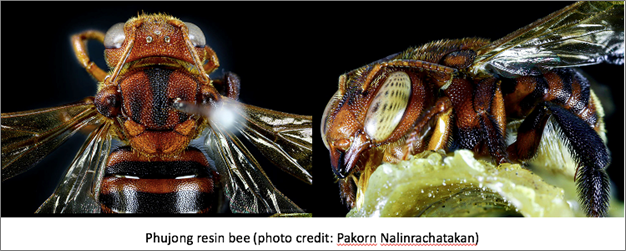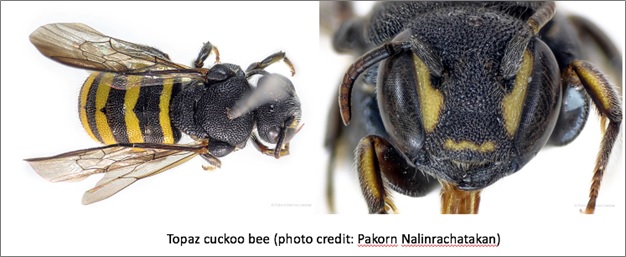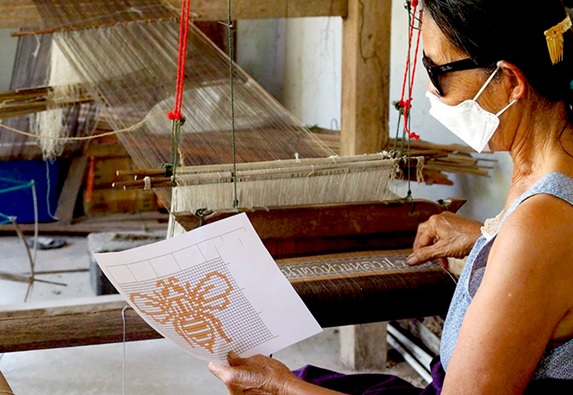Researchers of Ubon Ratchathani Rajabhat University made a discovery of two new bee species during a biodiversity survey of Phu Chong Na Yoi National Park. The discovery of Phujong resin bee and Topaz cuckoo bee was made, in collaboration with Chulalongkorn University and Phu Chong Na Yoi National Park, under a project sponsored by NSTDA aimed at investigating biological and cultural assets of Ubon Ratchathani province to promote provincial tourism and local economy.

Phujong resin bees or Anthidiellum (Ranthidiellum) phuchongensis sp. nov. are rare and endemic to Southeast Asia with only four species previously reported. These bees are known to construct resinous entrance tubes to their nests.

Topaz cuckoo bees or Stelis (Malanthidium) flavofuscinular sp. nov. are cleptoparasite bees found in the nest of Phujong resin bees. They have distinctive yellow and black stripes on the abdomen.
The research team has reported the discovery and described the two new species in a research article published in an international scientific journal ZooKeys.
Bees are essential to the ecosystem. As pollinators, bees support the growth of trees, flowers, and other plants, which serve as food and shelter for human and animals. The discovery of rare bees is the testament of the healthy ecosystem of Phu Chong Na Yoi National Park. The research team is working with the national park to preserve the bee habitat by maintaining and expanding the area of vertical earth bank around the stream where the nests were found. The story of this discovery is being publicized among the locals to raise awareness on conservation and inspire the community to create arts and crafts – traditional fabric and basketry - with unique identity to support an eco tourism and grassroots economy.

Ubon Ratchathani Rajabhat University is among 7 universities receiving funding from NSTDA to perform biological and cultural diversity studies to support the local economy and tourism. The research program is one of the Bio-Circular-Green Economy (BCG) actions. All biological and cultural assets compiled from the studies are archived on the digital platform Navanurak for the planning and management of conservation, restoration and utilization program to strengthen the local economy and tourism industry.
